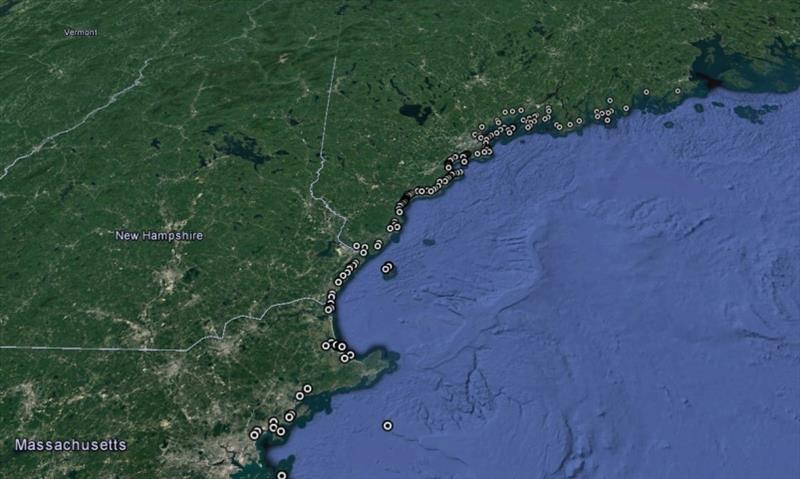
Harbor and Gray Seal Unusual Mortality Event
by NOAA Fisheries 7 Sep 2018 15:04 UTC

Map showing locations of stranded seals, represented by circles © NOAA Fisheries
Since July 2018, elevated numbers of harbor seal (Phoca vitulina) and gray seal (Halichoerus grypus) mortalities have occurred across Maine, New Hampshire and Massachusetts. This event has been declared an Unusual Mortality Event (UME).
Seal Strandings by State, July 1 - August 29, 2018
Maine 430
New Hampshire 72
Massachusetts 97
Total 599
Why are seals stranding?
Full or partial necropsy examinations have been conducted on several of the seals and samples have been collected for testing. Preliminary testing has found some seals positive for either avian influenza or phocine distemper virus. We have many more samples to process and analyze, so it is still too soon to determine if either or both of these viruses are the primary cause of the mortality event.
As part of the UME investigation process, an independent team of scientists (Investigative Team) is being assembled to coordinate with the Working Group on Marine Mammal Unusual Mortality Events to review the data collected and provide guidance for the investigation.
How can I help?
Report a stranded or floating seal
The most important step members of the public can take to assist investigators is to immediately report any sightings of live seals in distress or dead seals. Make the report by calling the NOAA hotline at 866-755-NOAA (6622) or by contacting your local marine mammal stranding network member by visiting Stranding Network web page for local contact information.
Please, do not approach or touch the seal.
Donate to the UME Contingency Fund
Congress established the Marine Mammal Unusual Mortality Event Contingency Fund in 1992. It gave the Marine Mammal Health and Stranding Response Program special authority to gather private donations to help it investigate and respond to marine mammal unusual mortality events.
How to donate to the UME Contingency Fund
More information